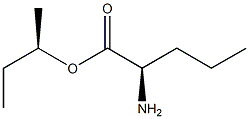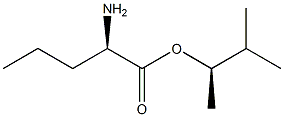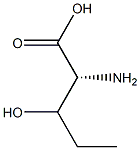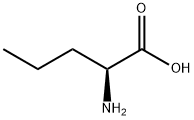5-AMINOVALERIC ACID
Synonym(s):5-Aminopentanoic acid;5-AVA;Homopiperidinic acid
- CAS NO.:660-88-8
- Empirical Formula: C5H11NO2
- Molecular Weight: 117.15
- MDL number: MFCD00008232
- EINECS: 211-544-5
- SAFETY DATA SHEET (SDS)
- Update Date: 2025-12-26 16:58:18

What is 5-AMINOVALERIC ACID?
Chemical properties
white to off-white crystalline powder
The Uses of 5-AMINOVALERIC ACID
5-Aminovaleric Acid is used in the development of drugs that halts severe type of seizures.
The Uses of 5-AMINOVALERIC ACID
5-Aminovaleric acid (5-AVA) is used:
- In the preparation of (5-AVA)x(MA)1-xPbI3, a perovskite for fabricating printable mesoscopic perovskite solar cell.
- As a spacer in the synthesis of rhenium and technetium-99m labeled insulin.
- To synthesize dipeptides that self-assemble to form nanotubes in the solid state as well as in solution over a wide range of pH.
- As a starting material in the total synthesis of an alkaloid, lycoposerramine Z.
Definition
ChEBI: A delta-amino acid comprising pentanoic acid with an amino substituent at C-5; a methylene homologue of gamma-aminobutyric acid (GABA) that is a weak GABA agonist.
Purification Methods
Crystallise it from H2O/EtOH. When heated above its melting point, it is converted to 2-piperidone with m 200o. [Wood & Colver J Am Chem Soc 67 654 1945, Beilstein 4 IV 2636.]
Properties of 5-AMINOVALERIC ACID
| Melting point: | 158-161 °C(lit.) |
| Boiling point: | 247.5±23.0 °C(Predicted) |
| Density | 1.2000 (estimate) |
| refractive index | 1.4650 (estimate) |
| storage temp. | Sealed in dry,Room Temperature |
| solubility | Chloroform (Slightly), Methanol (Slightly), Water (Slightly) |
| form | Crystalline Powder |
| pka | 4.27(at 25℃) |
| color | White to off-white |
| BRN | 906833 |
| CAS DataBase Reference | 660-88-8(CAS DataBase Reference) |
Safety information for 5-AMINOVALERIC ACID
| Signal word | Warning |
| Pictogram(s) |
 Exclamation Mark Irritant GHS07 |
| GHS Hazard Statements |
H315:Skin corrosion/irritation H319:Serious eye damage/eye irritation H335:Specific target organ toxicity, single exposure;Respiratory tract irritation |
| Precautionary Statement Codes |
P261:Avoid breathing dust/fume/gas/mist/vapours/spray. P305+P351+P338:IF IN EYES: Rinse cautiously with water for several minutes. Remove contact lenses, if present and easy to do. Continuerinsing. |
Computed Descriptors for 5-AMINOVALERIC ACID
New Products
4,4-Difluoropiperidine hydrochloride tert-butyl 9-methoxy-3-azaspiro[5.5]undecane-3-carboxylate Indole Methyl Resin N-Isopropylurea N,N-Dicyclohexylcarbodiimide(DCC) MELDRUMS ACID 5-METHYLISOXAZOLE-4-CARBOXYLIC ACID Magnessium Bis glycinate Zinc ascorbate 1-bromo-2-butyne 2-acetamidophenol 9(10H)-anthracenone Erythrosin B, 4-Piperidinopiperidine 2-((4-morpholinophenylamino) (methylthio) methylene) malononitrile 2,4-dihydroxybenzaldehyde 3-(4-morpholinophenylamino)-5-amino-1H-pyrazole-4-carbonitrile Methyl 2-methylquinoline-6-carboxylate 2,6-dichloro-4-nitropyridine 4-Bromo-2-chlorobenzonitrile 2-(benzylamino)acetic acid hydrochloride 4-(tert-Butoxycarbonylamino)but- 2-ynoic acid 3,4-dihydro-2H-benzo[b][1,4]dioxepine 1-Phenyl-1-cycloprppanecarboxylicacidRelated products of tetrahydrofuran

![(S)-2-[[4-[[(2-Amino-4-oxo-3,4-dihydropyrido[2,3-d]pyrimidine-6-yl)methyl]amino]benzoyl]amino]-5-aminopentanoic acid](https://img.chemicalbook.in/CAS/20200401/GIF/CB62314101.gif)
![[R,(-)]-2-Aminovaleric acid ethyl ester](https://img.chemicalbook.in/CAS/20200331/GIF/CB52171668.gif)


![5-[(4-Amino-1,2-dihydro-2-oxopyrimidin)-1-yl]-4-aminopentanoic acid](https://img.chemicalbook.in/CAS/20200119/GIF/CB12249651.gif)


You may like
-
 660-88-8 5-Aminovaleric acid-98% 99%View Details
660-88-8 5-Aminovaleric acid-98% 99%View Details
660-88-8 -
 5-Aminovaleric acid, 97% CAS 660-88-8View Details
5-Aminovaleric acid, 97% CAS 660-88-8View Details
660-88-8 -
 5-Aminovaleric Acid CAS 660-88-8View Details
5-Aminovaleric Acid CAS 660-88-8View Details
660-88-8 -
 5-Aminovaleric acid CAS 660-88-8View Details
5-Aminovaleric acid CAS 660-88-8View Details
660-88-8 -
 3-(4-amino-1-oxoisoindolin-2-yl)-1-methylpiperidine-2,6-dione 98%View Details
3-(4-amino-1-oxoisoindolin-2-yl)-1-methylpiperidine-2,6-dione 98%View Details -
 20677-73-0 (2,2-diethoxyethyl)methylamine 98%View Details
20677-73-0 (2,2-diethoxyethyl)methylamine 98%View Details
20677-73-0 -
 3-(4-(hydroxyamino)-1-oxoisoindolin-2-yl)piperidine-2,6-dione 98%View Details
3-(4-(hydroxyamino)-1-oxoisoindolin-2-yl)piperidine-2,6-dione 98%View Details -
 57381-49-4 2-bromo-4-chlorobenzonitrile 98%View Details
57381-49-4 2-bromo-4-chlorobenzonitrile 98%View Details
57381-49-4
Statement: All products displayed on this website are only used for non medical purposes such as industrial applications or scientific research, and cannot be used for clinical diagnosis or treatment of humans or animals. They are not medicinal or edible.
